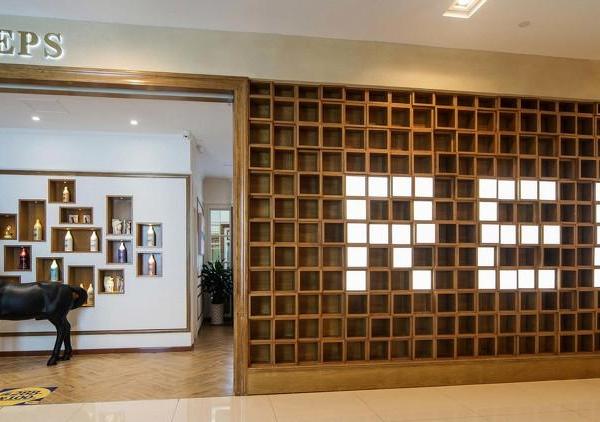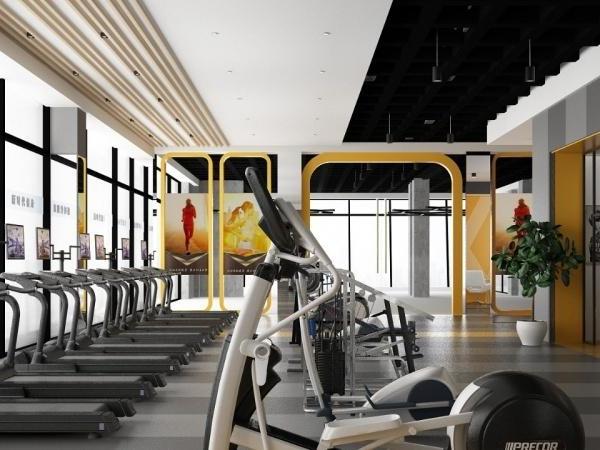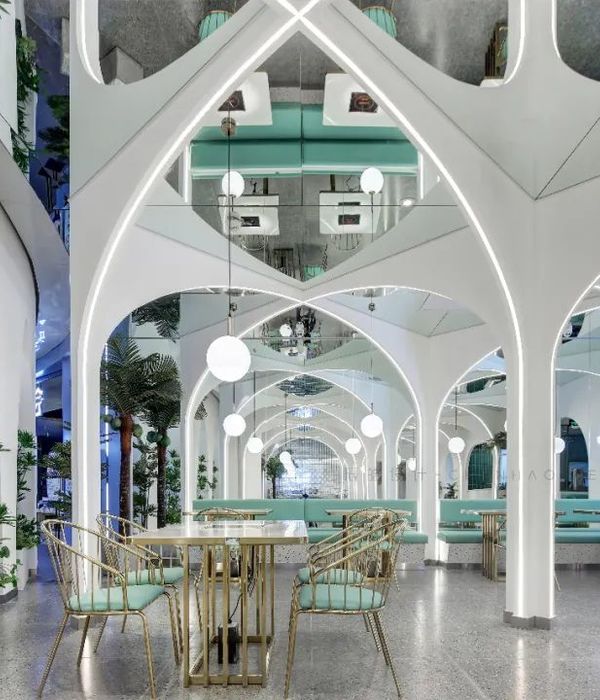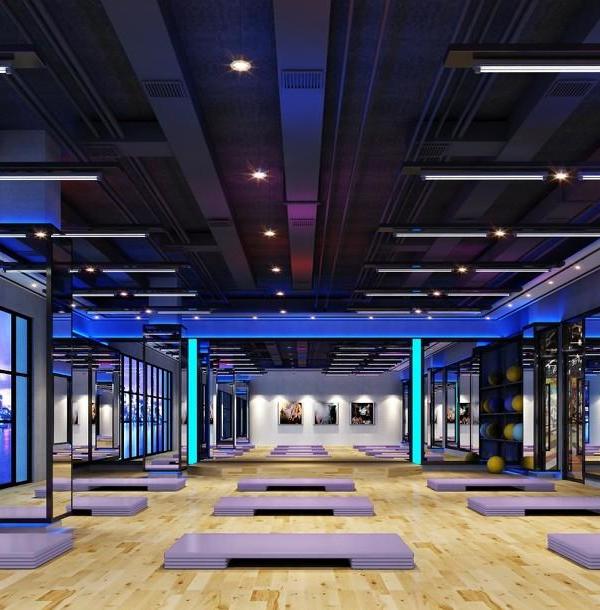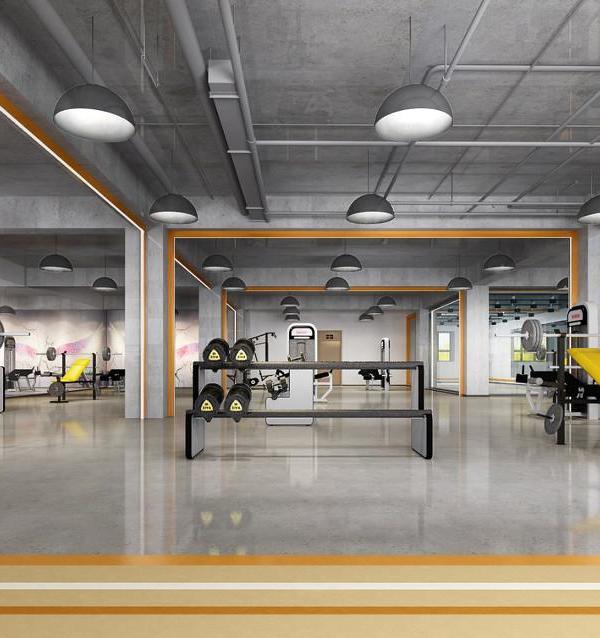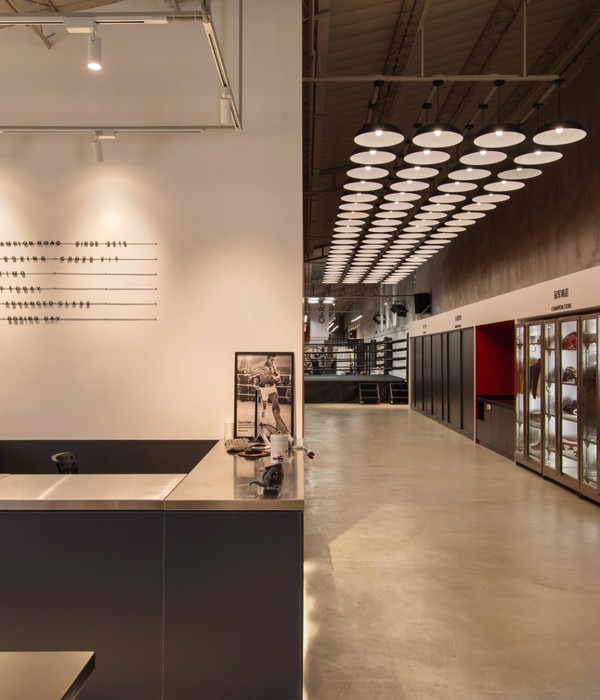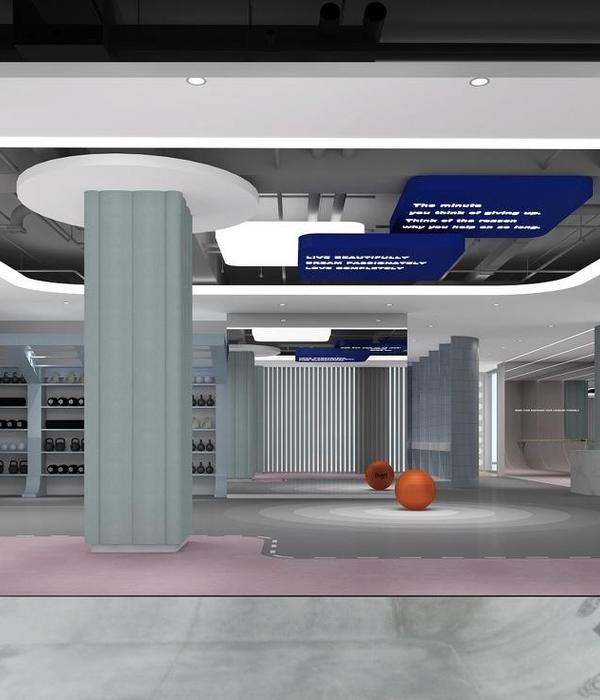Defined as the combination of a park and a shopping mall, both considered as highly attended "third place", this innovative library embodies an ecosystemic vision where the programs and the relations between them are developed with the same level of attention. It is a true social and information exchange network that takes shape into a complex circulation structure that renews the library experience with each visit.
The design of the Pierrefonds Public Library also innovates in its relation to the landscape, its discreet technological approach actively participating in the scenography, and the collections’ display. The latter are structured around thematic poles to enhance accessibility.
“The overall planning strategy of this innovative and highly technological library was inspired by the pragmatic efficiency of shopping centers, train stations, and airports, all while avoiding their flaws.”
The combination of an ideal park and a shopping mall. While looking through old masterplans of Pierrefonds-Roxboro, the architects came across a graphic image depicting the main planning criteria for green spaces in the district. The drawing showed an idealized park on a generic site. The park was divided into various areas, based on age groups and types of activities: green spaces, rest spaces, play zones, exchange networks, etc.; similar to library planning.
An in-depth study of this document, paired with a reorganization of the various areas, especially the green spaces, became one of the foundations for the project. An interior garden emerged as a result of these explorations. Created by an extraction process, the garden allows natural light as well as part of the natural surroundings to reach the heart of the existing building. The garden also functions as reference point for users and employees of the library.
Typical of suburban environments and often criticized, the shopping mall typology was also investigated. Generic buildings, obedient to functional and economic requirements, shopping malls have one or many focal points. These centers of activities and exchange are almost always topped with a large skylight accentuating the composition.
Another important characteristic of the shopping mall is its circulation network fed by multiple entryways that compels the customer into specific paths. Thus, stairways typically located in central atriums are often voluntarily reversed, as a way of extending the visitor’s stay. This typology is particularly interesting to the planning of a library. Its numerous spatial qualities are essential components of what is called a “third place”. Users circulating freely, flexibility in spatial organization, multiple movements and experiences are just a few of these advantages.
The project’s main elements are directly inspired by the shopping mall typology: wings merging into a central meeting space, a network of stairways, a bleacher, floor openings allowing visual connections, multiple skylights, as well as a civic space. The building’s surroundings, usually filled with parking lots, and opaque walls are here replaced by green spaces and glass curtain walls.
Formally, the project adjusts itself according to the site’s main elements. Instead of being purely functional and economic, the building’s shape is drawn to both manifest its urban presence on Pierrefonds Boulevard, and get closer to the wooded park, and to retract to reveal existing greenery islands on the site.
White transparency and structural lightness. The project’s forms and materials are simple and intend to disappear to highlight the presence of its landscape, users, and books. White is dominant both inside and out and offers a neutral canvas from which the landscape’s changing colors, the roaming visitors, and the many documents contrast and stand out. The white surfaces – walls, ceilings, and shelving – also reflect and multiply the natural light coming in through the vast glass curtain walls, the interior garden, the glass roof, and the multiple skylights, allowing the library to stay bright even during cloudy weather. On the upper level, the light-yellow epoxy-glazed concrete floor, oak bleachers, and colorful and comfortable furniture bring warmth to the predominantly white spaces.
A glazed curtain-wall system punctuated with white aluminum sections wraps the perimeter of the building. Some glass panels are screen-printed to create a smooth transition between transparency and opacity. The envelope is also textured inside; perforated aluminum panels flank the floor and ceiling, which also act as a ventilation distribution system.
Most of the upper floor slab is cantilevered along the perimeter of the building. The structural challenge to preserve the impression of lightness was achieved by making the floor slab appear as thin as possible. The steel structure was carefully crafted in collaboration with structural engineers, especially the glass roof over the bleachers facing the woods.
Finally, the new building spreads around the initial borough’s library. Developing the junctions between the new building envelope and the existing facade was another technical and esthetical challenge. Some salvaged bricks were used to create inside partitions recalling the outline of the previous building. Integrating the memory of the old library into the current project was fundamental.
Collections organization and distribution. In dialog with the collections’ organization in thematic poles desired by the clients, the architects developed an approach that prioritizes individuals and their interactions. It offers visibility, flexibility and a variety of spaces to read, work, and relax. The architects first opted for a dense distribution of the collections to free a maximum of space in the centers and accentuate the plan taking care to preserve interesting views.
Then, they proposed to place thematic isles in the freed-up spaces allowing the display of the collections in a library style. Just as one occupies a place that suits them in a park, these central spaces are organic and contain many sub-spaces more or less intimate following each one’s desire.
▼项目更多图片
{{item.text_origin}}



